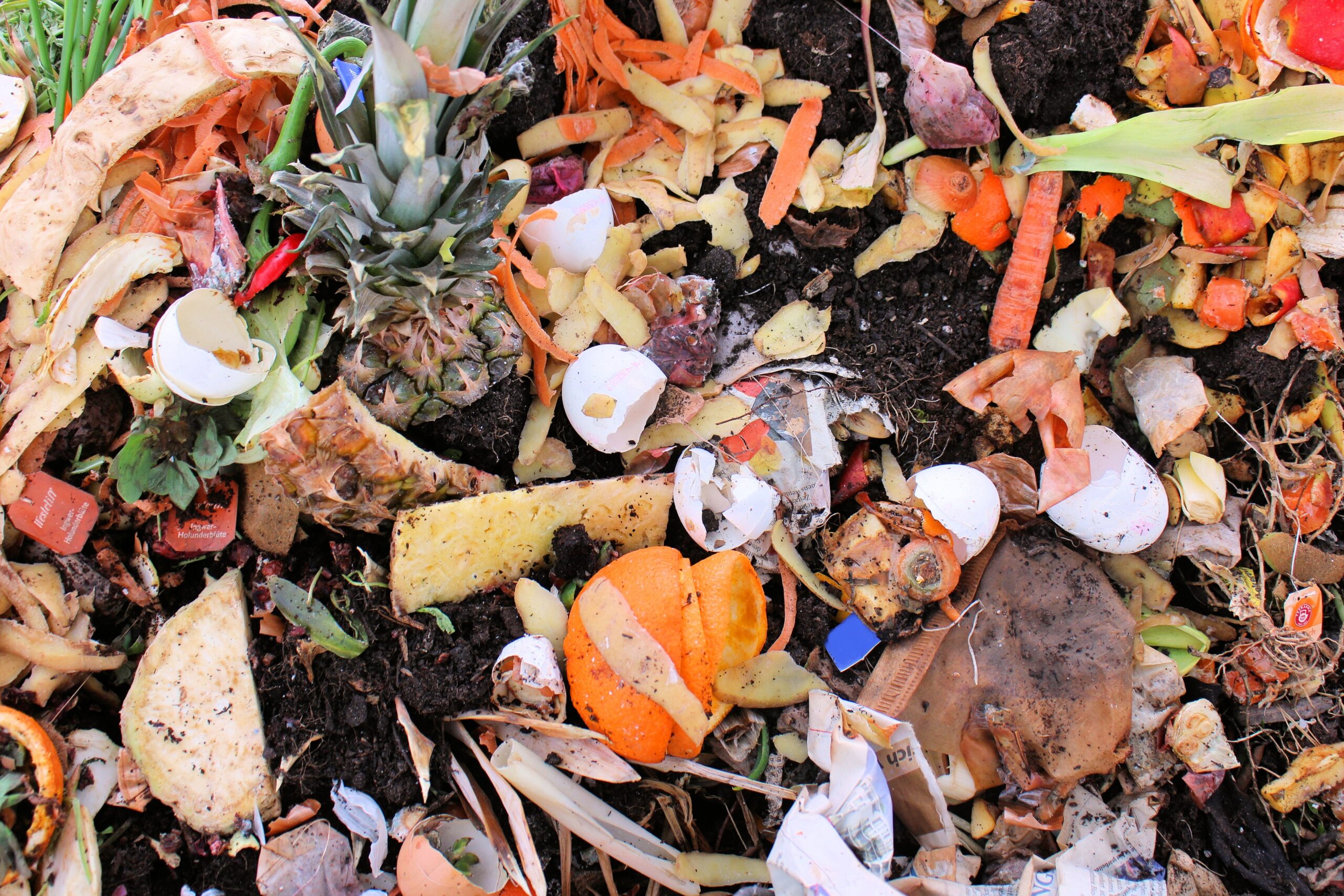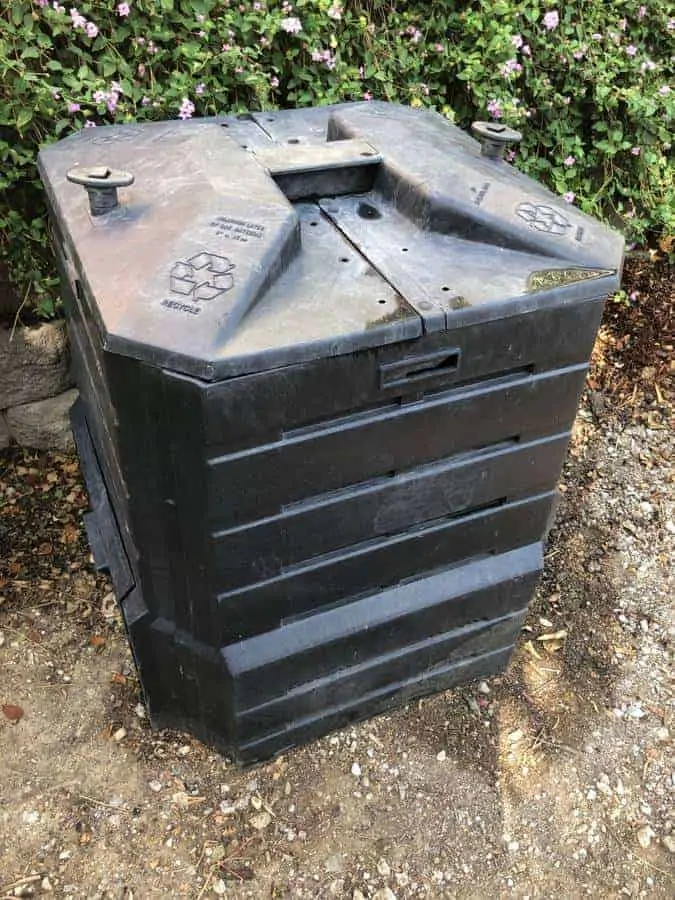As an Amazon Associate I earn from qualifying purchases.
When I first got into composting I was a simple fellow. I guess I still am. But at least I know a lot more about composting now. Back then, my idea was simply that I should pile up a bunch of garbage and wait for it to turn into dirt. Which works, if you have about a hundred years to wait.
Little did I know that there are many different methods of composting and each different type has a different purpose along with some advantages and disadvantages.
Figuring out the best way to compost for you personally (or for each situation that you might be in) means that you can find the easiest method of composting or the fastest method, whichever floats your boat!
How I Classified Different Methods of Composting
Now, it’s worth noting here that there aren’t really a million different methods of composting. There are many, to be sure, but several of the types that we’re going to talk about can be lumped in with other types. In the interest of clarity, however, I’ve separated them as much as possible. For example, trench composting is technically a form of cold composting but, since they are traditionally done differently I have included them in separate places.
So whether you’re brand new to composting or you’re an old hand that tells people about composting ratios while waiting in the grocery store line I hope you’ll learn about a new method or two here. Let’s dive in!
The 10 Different Methods of Composting
1. Hot Composting
Hot composting is traditionally known as the “fast” method of composting. It involves piling specific ratios of compost ingredients together, balancing the moisture, turning regularly, and maybe even peeing on your compost, all in the hope of creating the perfect environment for huge amounts of microbial growth.
As the microbes flourish and the decomposition accelerates the pile starts giving off heat. This is the sign of progress that many people hold as a badge of honor (going as far as to post thermometer pics on their Instagram…)
While it is fast and comes with other advantages, hot composting tends to be an effort-intensive form of composting that requires active participation. So if you want to spend lots of time in your garden but have great results, this method of composting is probably for you!
| Advantages | Disadvantages |
|---|---|
| Quick turnaround time; fewer nutrients leach out of the compost; less likely to attract pests; can kill most weeds as well as seeds from your kitchen. | Lots of work; must be aerated and watered regularly, typically needs material to be added in large amounts to provide the “critical mass” necessary to heat up. |
2. Cold Composting
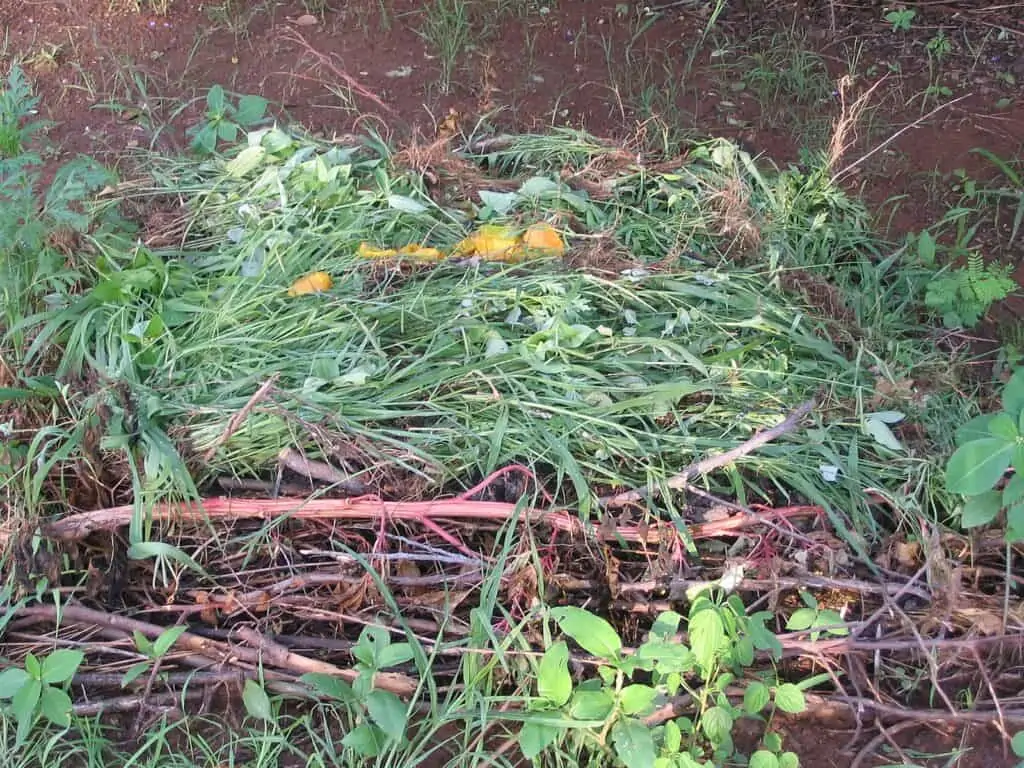
Cold composting is probably my favorite method. It is, after all, one of the methods that mother nature has been employing for millions of years to keep soil in tip-top shape.
Cost composting is considered “passive” as very little needs to be done besides regularly adding to the pile. You don’t have to worry so much about ratios, watering, or aerating (although they all still help) and can just throw things on and wait for things to break down.
The main problem here is that cold composting has almost none of the advantages of hot composting but the main area where they differ is in time to completion. If you build up a large cold compost pile and then let it sit, it can take a year or more for it to be ready to sift and use. And if you keep adding to the same pile? It’ll never be done!
With that being said, this is the method of composting that I suggest to most people who are looking to get started. It is stress-free and virtually impossible to mess up. If at some point in the future, you want to expedite things then you can actually make the switch from a cold pile to a hot pile without much effort.
| Advantages | Disadvantages |
|---|---|
| Easy to get going; low maintenance; lots of time for worms to infiltrate your pile and for beneficial microorganisms to grow. | It’s very slow; some nutrients leach out, are washed out, etc; can attract pests and unwanted bugs, does not kill weed seeds. |
3. Tumbler Composting
If you are in the city, many of the traditional methods of composting might be unavailable to you. Whether it’s because you lack space or because you have a city ordinance that prevents it, piling up yard waste is typically frowned upon in an urban setting. Never fear, however, there are several types of composting available to you, starting with a tumbler!
A compost tumbler is a plastic or metal barrel that is typically mounted on a stand which allows it to rotate. You simply open the hatch and throw in your kitchen scraps and chopped up yard waste. A simple turn every couple of days, as well as a bit of water, is typically all that your tumbler needs to turn your waste into compost.
Composting in a tumbler is typically considered a simplified method of cold composting but has some of the advantages that you get with hot composting. It is considered to be cold because most tumblers lack sufficient volume to really heat up (typically a cubic yard or more is necessary). However, the tumbler does hold in the heat (and most are black which heats up in the sun) which means that many people are able to finish a batch of compost every month or two during the summertime.
The main downside here is that you have to buy a tumbler. However, if no other option is available to you, tumblers can be an attractive option that will keep your neighbors happy. In fact, tumblers are even a popular option for people in apartments as you can compost right on your balcony.
| Advantages | Disadvantages |
|---|---|
| Faster than cold compost in a pile; easy to aerate; less odor; less nutrient loss; less likely to attract pests. | You have to buy a tumbler; limited space; material typically needs to be processed (chopped up) prior to adding it; needs some amount of regular care. |
4. Plastic Bag Compsting
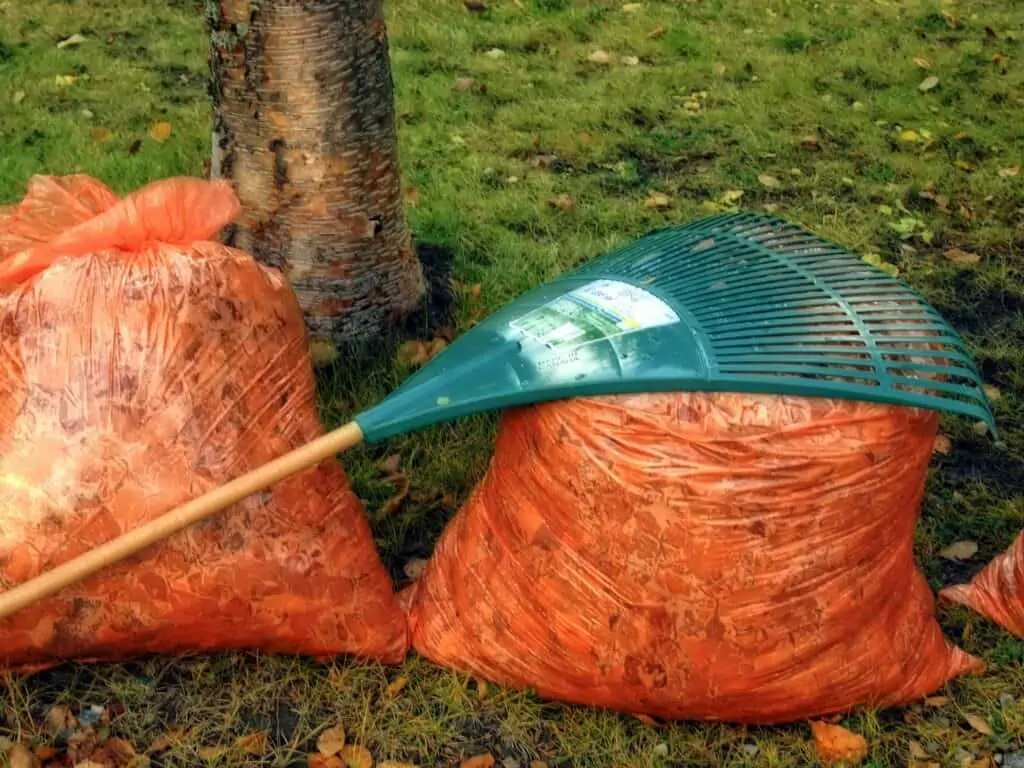
I’m sure the person who first discovered plastic bag composting was a lot like me. He probably raked up some leaves, stuck them in a bag somewhere, and forgot about them until his wife asked what in the world was in that bag by the shed.
Plastic bag composting is typically as easy as placing your material in a (drumroll…) plastic bag or a garbage can, poking a few holes for aeration/draining, and letting it sit. Depending on your ratios, this is a common method for making either compost or leaf mold.
The main advantage here is that you can do this extremely cheaply (I pick up trashcans at the thrift store when I do it) and with limited space. In fact, before I knew what I was doing, I created some compost in a cardboard box. Happy accidents.
Now, because very little air can get into the bag/can, the process of decomposition is mainly anaerobic. This isn’t a problem, per se, it just utilizes a different type of microorganisms and has a tendency to produce an unpleasant sour smell. If your ratios are right from the beginning (it’s hard to add partway through) this can be minimized.
Because it doesn’t rely on heat, this type of composting can typically be done year-round, as long as it doesn’t freeze solid. So if you have space for bags, you have space for this type of composting.
| Advantages | Disadvantages |
|---|---|
| Low effort; requires small amounts of space; can be done year-round. | Can produce a smell that is unpleasant and attracts pests; can end up as a gross slimy mess if you have too much nitrogen (such as grass clippings); doesn’t kill weed seeds or diseased plants. |
5. Bokashi Composting
If your grandma is into canning and pickling, she’ll be ecstatic when you tell her about bokashi composting. Bokashi composting is one of the most fascinating methods because, not only does it different entirely in methodology, it allows you to compost meat, milk, and even oil.
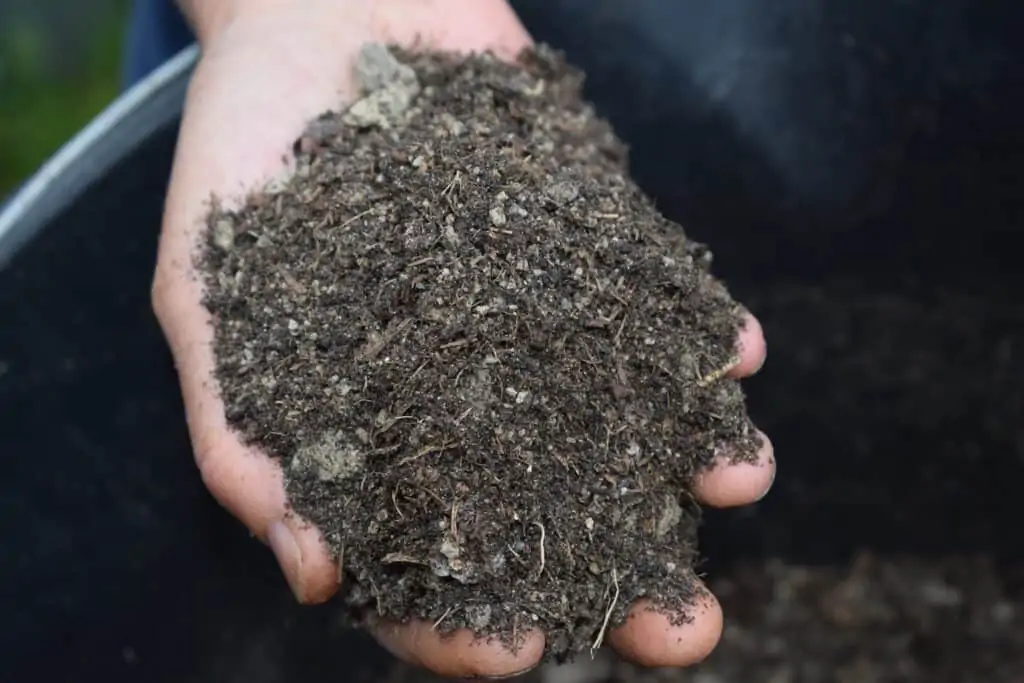
How Bokashi Composting Works
Bokashi composting typically takes place in a bucket or jug. You open it, add your ingredients, sprinkle in some bokashi bran, and close it up again. The resulting anaerobic reaction is technically fermentation and can break down just about anything.
As an added bonus, bokashi buckets have a drain on the bottom (at least the ones you buy do) which allows you to drain out some liquid that is incredibly nutrient-rich (for you dirt/plants, not for you).
While this is the method I’m least familiar with (having only dabbled in it) it is the one that I would use if I had to compost indoors or had a large amount of stuff to break down that was unacceptable for a traditional compost pile.
The main drawbacks here are that you have a very limited amount of space to work with (like a five-gallon bucket…) so this works best in conjunction with another type of composting. Many people will actually jump-start things that are difficult to break down in their bokashi bucket and then add them to their tumbler or hot composting pile.
| Advantages | Disadvantages |
|---|---|
| A wide range of things can be composted; minimal smell; won’t attract pests as it’s sealed. | Limited space; you need to purchase or make bokashi bran as well as a bucket. |
6. Vermicomposting
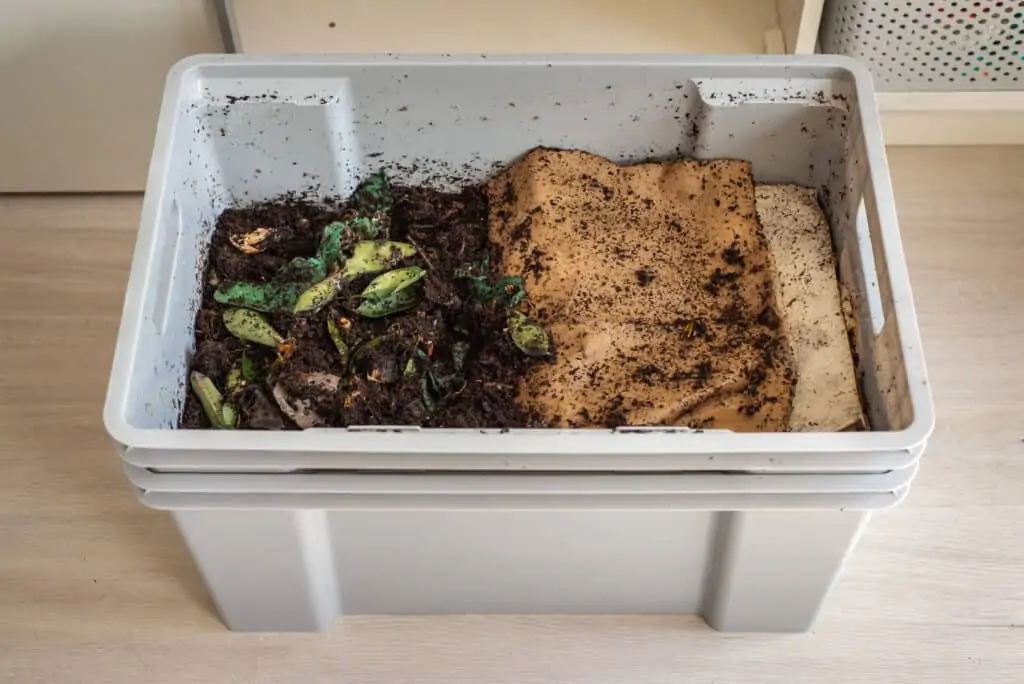
In the realm of composting methods that can be done indoors or on an apartment balcony/porch, vermicomposting is probably the fastest, least smelly, and most interesting.
Vermicomposting is basically keeping a worm farm. You supply the worms with a steady supply of food and they supply you with compost in the form of “castings” (worm poop).
While most people can cobble together that worms will live in and enjoy, the best worm piles are multi-unit configurations that have to be purchased. You’ll need some dirt, some worms, and a unit to get started but this method can be lots of fun, especially for kids (and big kids like myself).
| Advantages | Disadvantages |
|---|---|
| Uncomplicated; minimal odor; can be done indoors; can handle most food waste; castings are nutrient-rich. | Can be difficult to remove complete material; can be expensive to get started; may attract fruit flies or pests. |
7. Bin/Box Composting
Composting in a bin is my preferred method. I have been using the same bins for several years and have produced thousands of pounds of compost during that time.
Bins (such as mine above) can be used for either hot or cold composting and has all the benefits that come with either one. You simply open up the top, drop in your materials, and close it up again. The plastic holds in heat, moisture, and stench while keeping out all kinds of vermin and pests.
Bins are especially useful if you don’t want an eyesore of a compost pile hanging out in your yard but need more space than a tumbler. The main drawback is that it can be very difficult to aerate and is more difficult to extract finished compost from.
However, it is quicker than traditional cold composting and might even keep pests such as bears away from your precious cargo!
| Advantages | Disadvantages |
|---|---|
| More aesthetic than a bare pile; holds heat; can deter pests and animals; nutrients don’t get washed out by rain; less smell. | Takes money to buy or time to build; difficult to turn; slower than traditional hot composting. |
8. Triple Bin Composting System
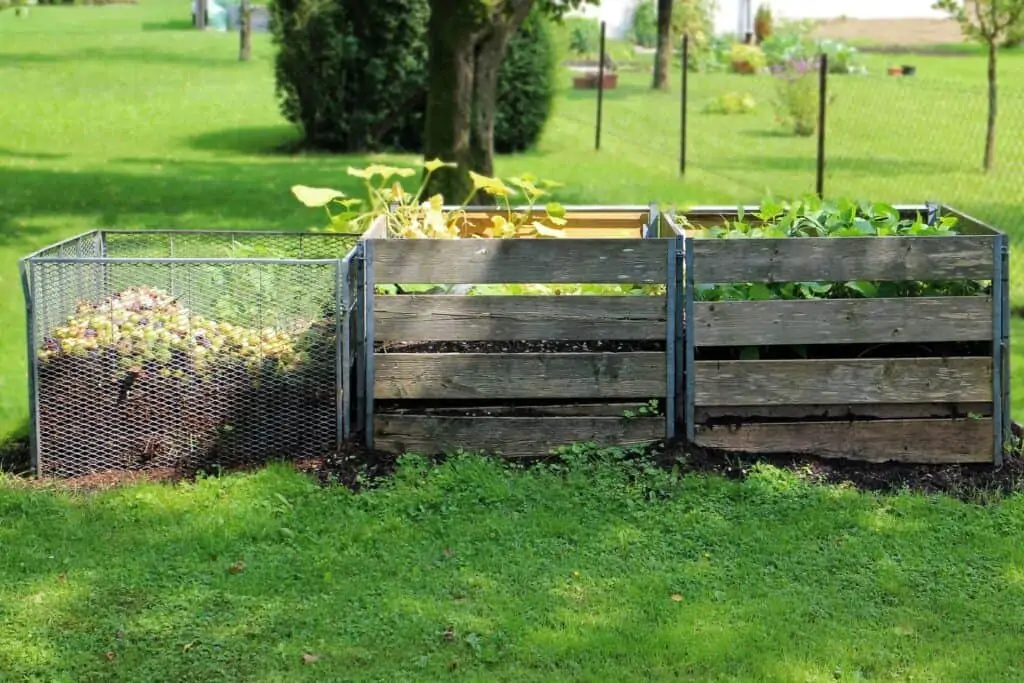
If you have a large yard and want to process a ton of material, a triple bin/box system might be exactly what you need. The main drawback to a compost pile is that, at some point, you have to stop adding to it so that it can finish. With three separate bins you can compost constantly by simply shifting the container you are adding to every 3-4 months.
This can be done by creating a system such as the one above, buying three separate bins or tumblers, or creating a module out of pallets, wire, etc. While it is typically helpful to contain your piles (it holds in the heat) you could actually perform some form of this system with three separate traditional piles. The separate piles can be hot or cold compost and can take as much or as little maintenance as you’re willing to give them.
The main advantage here is that you can consistently produce large amounts of compost. The only drawback, then, is the space required to do so! Not to mention the large number of materials you’ll need. In fact, if you see someone in the city park raking up a ton of leaves, they’re probably taking them home to fill up their triple bin composting system.
Many people actually choose to stockpile seasonal ingredients such as leaves in one of the bins which actively composting in the other two. The ingredient-bin will slowly start to decompose and can be added to their other two (typically hot piles) at any time when additional material is needed.
| Advantages | Disadvantages |
|---|---|
| Can be hot or cold piles; produces large amounts of compost. | Requires time and space to get going; lots of material needed; can be difficult to aerate; may attract pests; can stink. |
9. Sheet Composting
Sheet composting (also known as lasagna composting) is a very old method of composting that is often used to create raised gardening beds. In sheet composting, you simply spread your materials over the area you want to finish compost to be in layers (like a lasagna).
For example, you’d cover the ground with newspaper then add a 1″ layer of a nitrogen-rich source, followed by a 1″ layer of a carbon source, and then repeat until you reach the desired height (remember that it will shrink as it breaks down).
Once you have everything piled up, waiting is the name of the game. It may take 6 months to a year for your sheet to break down enough that it is ready to plant.
| Advantages | Disadvantages |
|---|---|
| Can be used to compost literal tons of material; improves existing soil; beneficial for earthworm populations; you don’t have to move or spread the finished product. | It takes a long time; requires lots of effort up-front; doesn’t kill weed seeds; may require lots of space. |
10. Trench/Pit Composting
This method exploded with popularity a couple of years ago when Mark Valencia of Self Sufficient Me posted a video on YouTube showing what happens when you simply “bury kitchen scraps in your garden.”
Since he does a much better job than I do explaining things, check it out:
In practice, in-ground composting is as simple as it sounds. You dig a trench, put your material in, and continue on with life. However, since decomposition obviously takes time it can take a bit of effort to do this correctly.
The most efficient way to do this is to treat your patch of the ground like a triple-bin system, rotating the spot you’re trench composting like so:
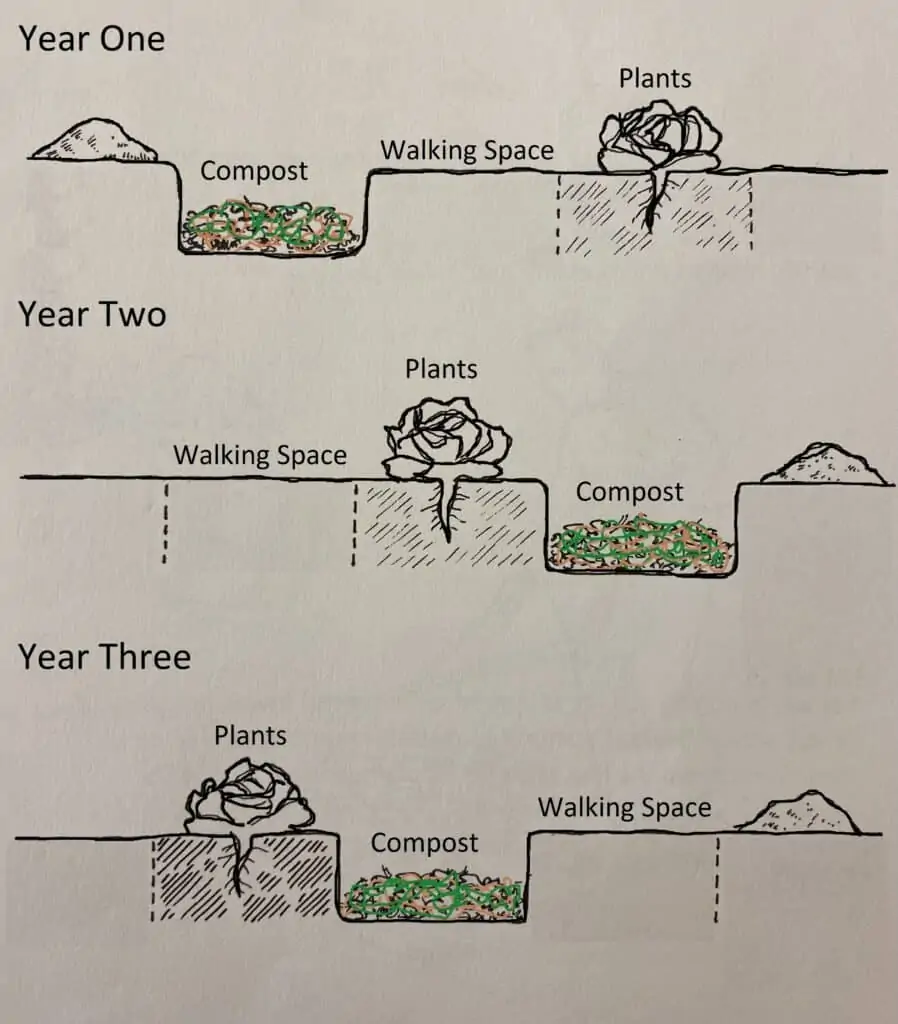
This method is especially attractive if you have pest problems or don’t want to have a pile out in the open that you have to care for.
| Advantages | Disadvantages |
|---|---|
| Simple; requires no upkeep; boosts earthworm populations; doesn’t attract pests; kills some weed seeds. | Requires significant effort up-front; requires a massive effort to process large amounts of material; improves the soil in a very limited area. |
Which Type of Composting Is Best for You?
If you’re looking to start composting, my advice is to choose the easiest composting method you can find, which is probably cold composting in a bin. It is much easier to choose something that requires minimal maintenance than to choose a composting method that both costs money and leaves you with a half-finished pile of compost that needs babysitting.
For most people, the best way to compost will be dictated by the space available, the amount of material they have to compost, and whether or not you like hanging out with your compost pile. So, while perhaps there isn’t a perfect composting method for everyone, you’ll definitely be able to find a method that’s perfect for you! Good luck!

